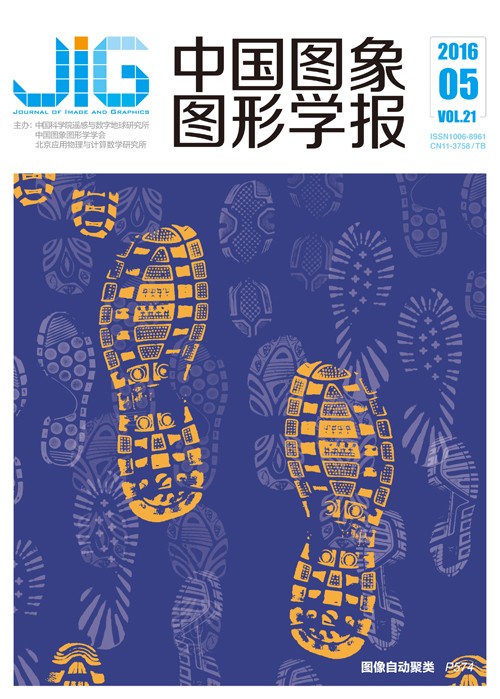
结合先验形状信息和序贯学习的心血管内超声外弹力膜检测
摘 要
目的 针对心血管内超声(IVUS)图像中钙化斑块、声影等干扰因素影响外弹力膜(EEM)轮廓检测准确性的问题,提出结合先验形状信息和序贯学习分类的心血管内超声外弹力膜检测的改进算法。方法 首先用多类多尺度序贯学习(M2SSL)将IVUS图像分割七大不同组织;然后在分类结果的基础上,结合血管先验形状信息筛选出外弹力膜轮廓的关键点;最后,结合IVUS图像的梯度和相位信息,采用Snake模型,获得最终的EEM轮廓。结果 临床采集22组IVUS序列,挑选出具有代表性的153帧图像做实验。统计数据显示:本文算法检测结果的平均Jacc指标为88.5%,满足临床诊断要求,性能优于国内近年来较好的算法。结论 本文的EEM自动检测算法简单有效,相比国内已有算法,提高了对钙化、纤维斑块以及声影区域的识别能力,对含钙化斑块、纤维斑块或血管中心偏移的高频IVUS图像具有较高的适用性。
关键词
External elastic membrane border detection based on sequential learning and prior shape information for intravascular ultrasound images
Lin Mudan1, Yang Feng1, Liang Shujun1, Zhao Haisheng1, Huang Zheng2, Cui Kai2(1.Biomedical Engineering School of Southern Medical University, Guangzhou 510515, China;2.Department of Cardiology, Nanfang Hospital, Southern Medical University, Guangzhou 510515, China) Abstract
Objective This paper presents an improved method based on sequential learning and prior shape information for detecting the external elastic membrane (EEM) in intravascular ultrasound (IVUS) images to overcome the problems of interference factors, such as calcified plaque and acoustic shadow. Method Multi-class multi-scale stacked sequential learning was applied to divide an IVUS image into seven tissues. Subsequently, critical points on the external elastic membrane border were selected based on the classification results and the prior shape information of the vessel. Finally, a snake model combined with gradient and phase information of the IVUS images was used to obtain the final external elastic membrane border. Result In the experiments, the algorithm was implemented on 153 typical IVUS images from 22 in vivo clinical IVUS sequences. Statistical results showed that the average JACC measure of EEM borders detected by the algorithm was 88.5%; thus, the algorithm could meet clinical demands, and its performance was better than those of algorithms in recent studies in China. Conclusion The proposed automatic algorithm is simple and effective. Compared with existing Chinese algorithms, it has improved capability of recognizing calcified plaque, fibrous plaque, and acoustic shadow and can be applied to IVUS images with calcified plaque, fibrous plaque, or catheter eccentricity.
Keywords
|



 中国图象图形学报 │ 京ICP备05080539号-4 │ 本系统由
中国图象图形学报 │ 京ICP备05080539号-4 │ 本系统由